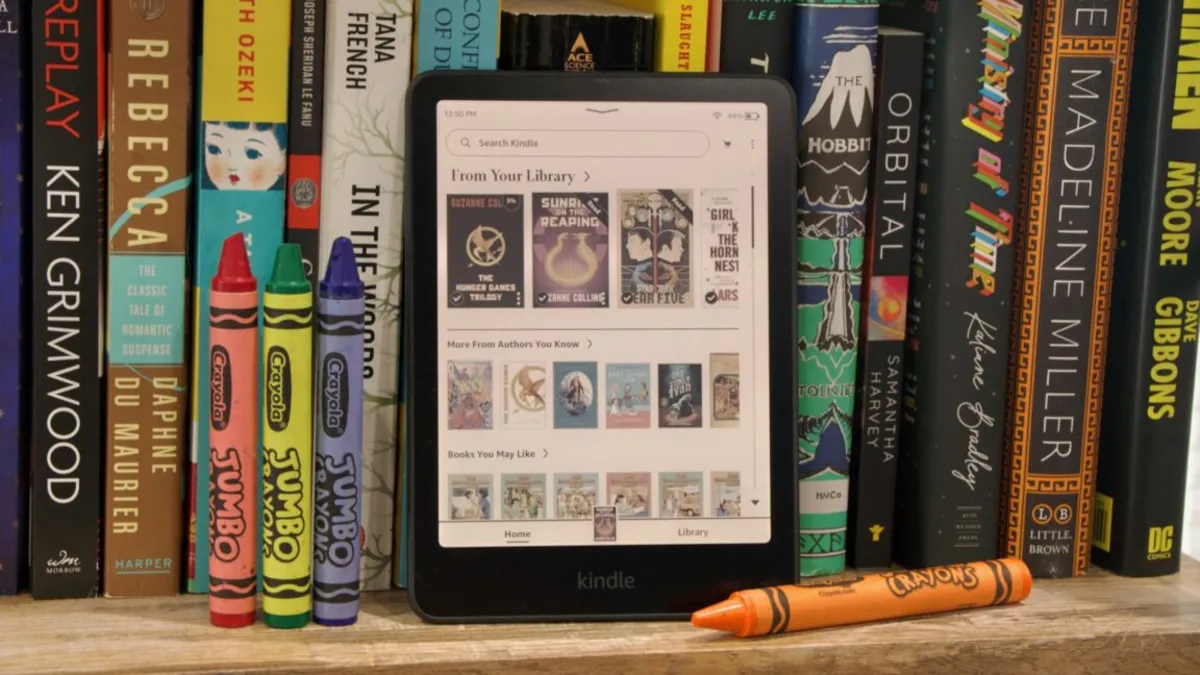
Amazon has recently launched its first color E-Ink book reader, the Kindle Colorsoft, priced at $280. However, the initial reception has been rocky, marked by shipment delays due to a screen issue where a faint yellow band appeared at the bottom. Thankfully, Amazon claims this issue has been addressed in the latest versions of the Colorsoft, although specific details on the adjustments remain undisclosed.
Although Amazon did not provide an early review unit, we finally got our hands on the Kindle Colorsoft a few weeks ago. After extensive use, our primary observation is that while the Colorsoft is a decent device, it does not adequately address the shortcomings of the monochrome Kindle Paperwhite. Moreover, it fails to significantly improve the existing limitations of color E-Ink technology, making the reading experience of standard text somewhat less enjoyable.
The Kindle Colorsoft introduces a splash of color to the reading experience. The setup and sleep screens, book covers, and highlights can now be displayed in vibrant colors, including yellow, pink, blue, and orange. This color functionality is consistent with what users find in the Kindle mobile and desktop apps. However, while color content such as comics, PDFs, and web pages can be rendered in color, the experience is hindered by the limitations of the E-Ink technology, which supports only 4,096 colors compared to millions on traditional LCD or OLED screens.
Despite the introduction of color, the Kindle Colorsoft struggles with reading standard monochrome text. The device features a 7-inch screen that is notably smaller than a typical comic book or PDF page, causing text to appear small and challenging to read. While zooming and scrolling are available, the E-Ink technology's slower response time can make this frustrating for longer reading sessions.
Although Amazon has added enhancements to improve color display quality, such as a new display layer for better contrast, the inherent limitations of color E-Ink remain. The colors are often muted and do not possess the same lifelike quality found in monochrome E-Ink screens. Furthermore, users may notice slower page turns compared to the Kindle Paperwhite, even though both devices are equipped with similar internal hardware.
In terms of design, the Kindle Colorsoft closely resembles the Kindle Paperwhite, utilizing the same cases and accessories. It features a comfortable 7-inch E-Ink screen, auto-brightness sensor, and a matte finish. However, the color display compromises the reading experience, especially for black-and-white text. The Colorsoft does not support Dark Mode natively, although a feature called Page Color attempts to simulate it.
The battery life of the Colorsoft lasts up to 8 weeks, compared to the Paperwhite's 12 weeks. While this difference may seem minimal, especially when compared to modern tablets, it’s still a factor to consider for avid readers.
Ultimately, the Kindle Colorsoft presents a mixed bag of features and drawbacks. While it offers a unique reading experience as a color E-Ink device, it doesn't quite live up to expectations, especially at nearly double the price of the Kindle Paperwhite. It retains the hallmark distraction-free reading experience of the Kindle brand, yet loses some of the visual appeal that has defined monochrome E-Ink devices.
The Colorsoft might appeal to those who desire a color reading experience for specific content, but it likely falls short for users seeking a robust reading tool for text-based material. In contrast, those who wish to read comics or PDFs may find larger, color-capable tablets more suitable for their needs. As always, we look forward to seeing how Amazon evolves its Kindle lineup in future iterations.
The Good: E-Ink Kindle with a color screen, no-distraction reading experience, faster than older models, compatible with existing cases.
The Bad: Color E-Ink lacks vibrancy and accuracy, expensive compared to other Kindle models, early backlight issues may still be a concern.
The Ugly: Display appears subtly grainy and lacks the high contrast of the Paperwhite, making it less visually appealing for standard reading.